Vivo X90 Pro Review: Back on Track
![]()
The Vivo X90 Pro isn’t the brand’s top device, given there’s a Pro+ version out there, but this phone isn’t one to take lightly. Vivo isn’t shy about the credibility and relevance it wants in the market, even if its phones aren’t all that visible in North America yet.
Whether or not the X90 Pro moves that needle is really up to the company’s overall strategy, but what matters here is whether or not this phone lives up to the momentum its predecessors kicked off. The camera remains the primary driver — much as it is for every flagship phone these days — going up against competitors who also continue to get better, too.
It’s also the phone that, at least in theory, should take a bigger step forward in establishing what Vivo’s partnership with Zeiss means in usability and output.
Vivo X90 Pro: Design and Build
I don’t know if Vivo meant to include branding across the device, but there are a few elements to point to that aren’t all that subtle. As always, “Professional Photography” is emblazoned on the top edge, while “Xtreme Imagination” sits below the rear camera array. Throw in the Zeiss logo, and you get the sense the X90 Pro should deliver something special.
![]()
This phone doesn’t deviate a whole lot in its general design, sporting the same 6.78-inch AMOLED, albeit with a slight dip in both resolution (2,800 x 1,260) and peak brightness (1,300 nits). The 120Hz refresh rate and other familiar visual standards still apply, so the changes are largely negligible in most circumstances. You can expect the same curved edges for the screen, which is unfortunate given how it makes the phone less wieldy unless you throw on the included silicone sleeve case. This is something of a departure for Vivo, who previously used sleeve cases that didn’t always cover the sides.
![]()
The one disadvantage of using the silicone case is how much it obscures the vegan leather back panel. This is something of a throwback to the X60 Pro, which used a faux leather back for a nice aesthetic. This one is better, complementing the camera module well for a high-end look that also has a retro vibe to it. You can also charge wirelessly — and crucially — the X90 Pro has official IP68 protection.
![]()
On the inside, Vivo chose to replace the Snapdragon 8 Gen 1 processor from the previous model with a MediaTek Dimensity 9200 CPU meant to provide greater efficiency and battery life. It’s interesting because the X90 Pro+ has the Snapdragon 8 Gen 2 chipset, making the X90 Pro more of a successor to the X80 than the X80 Pro. Storage and memory start at 8GB of RAM and 256GB of storage, though other variants come with 12GB of RAM or 512GB of storage.
Vivo X90 Pro: Camera Features
This is the first Vivo phone to use a Type 1 (13.1 x 9.8mm) Sony IMX989 sensor, the same one we’ve seen in the Xiaomi 12S Ultra and 13 Pro. The larger sensor makes the 50-megapixel wide camera (23mm equivalent) more intriguing, helped by an f/1.8 aperture, optical image stabilization, dual pixel and laser autofocus, and larger 1.6µm for better light capture. By default, the camera will shoot at 12.5-megapixels using 4-in-1 pixel binning, leaving full resolution to the separate High Resolution mode.

The 50-megapixel telephoto 2x optical zoom (50mm equivalent) uses the Sony IMX758 Type 1/2.4 sensor with a wider f/1.6 aperture and optical image stabilization. The 12-megapixel ultra-wide camera (16mm equivalent) has a familiar Sony IMX663 Type 1/2.93 sensor with a 108-degree field of view, making it clear you’ll find the better ultra-wide in the X90 Pro+.

Then there’s Zeiss’s presence, which on the outside, comes in the T* Coating covering the wide camera. It’s worth noting this coating covers the whole camera array in the Pro+, just like it did on the X80 Pro. The rest of Zeiss’s imprint lies in the software.
As for Vivo, it includes a newer V2 Imaging Chip inside to take the image signal processor further in a variety of ways. Much of it is centered on low-light and night shots, improving quality while reducing any potential shake by cutting down the time it takes to snap and process the image. This “zero latency” also applies to capturing movement, suggesting the photo will snap at the precise moment you tap the shutter button.
Vivo X90 Pro: Software Features
The most immediate contribution is the Zeiss Natural Color found in a few of the shooting modes. It produces more realistic color in every photo, giving images a little more realism relative to the ‘pop’ the more vivid Vivo color profile does when turning Zeiss off in the app.
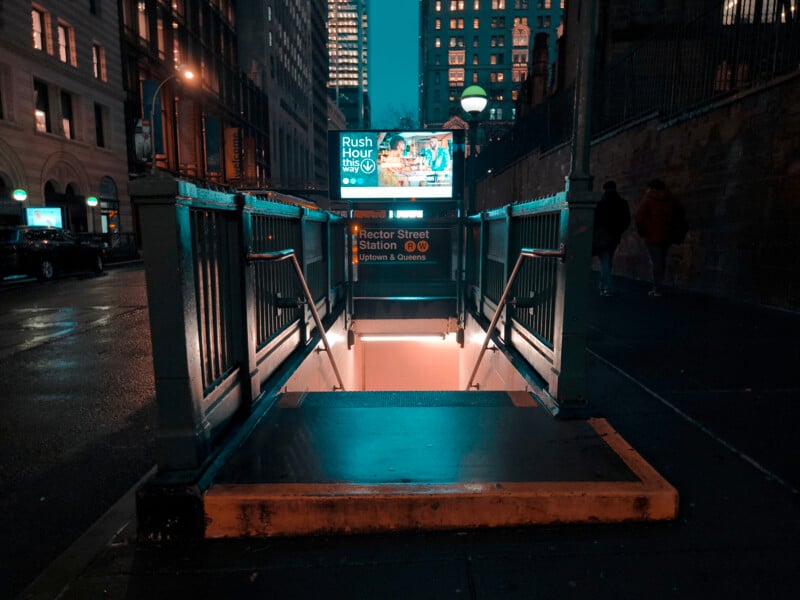
The same modes are back again, giving you plenty to work with, and Vivo says it improved Astro to make it possible to capture the stars handheld, which is only even possible if you’re in a very dark environment. Light pollution will ruin the photo, and frankly, handheld shots are easy to screw up, no matter how much special stabilization it threw in. Sports mode gets similar treatment in the form of reducing lag to freeze a fast-moving subject — something I feel has been sorely lacking in camera phones.
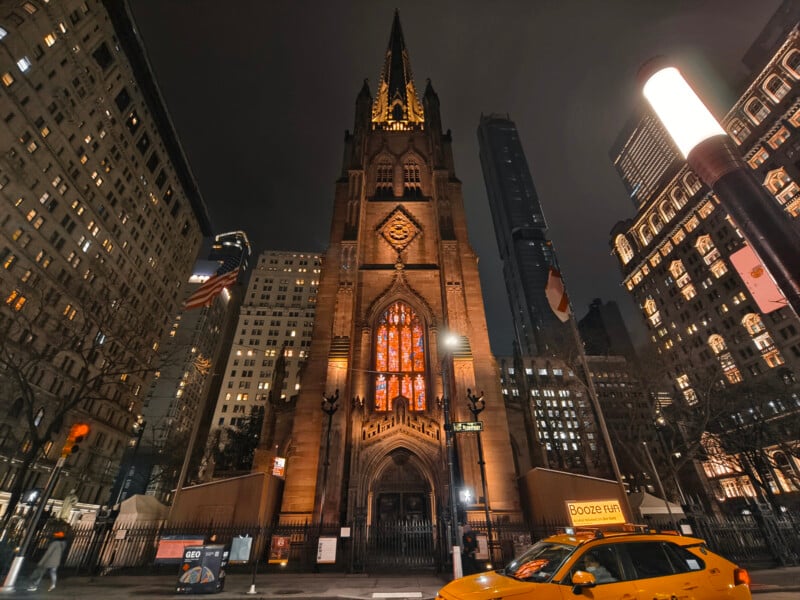
I also like that Vivo smartly makes certain features available through the editing suite, like applying the Long Exposure/Night filters to any image afterward, even if taken in another mode. There are a fair amount of tools in there worth exploring, even if some come off as gimmicky or silly.
Vivo X90 Pro: Image Quality
Main camera
Where I didn’t see as big a jump in quality between the X70 and X80, I would say it’s more apparent here with the X90. The biggest reason is the larger sensor, for sure, though processing also comes out looking better for a couple of reasons. One is Vivo’s sharpening isn’t as pronounced. It’s definitely still there — sometimes too much — but more subdued than before. The other is colors just look better with the excellent dynamic range. Low-light shots probably benefit the most from these changes, but I would say there’s improvement across the board.
There’s still the tendency to ramp up exposure to the point of clipping highlights, but playing around with the exposure slider helps offset that. Zeiss’ contribution simply stands out more this time compared to the more restrained and warmer tone I saw with the X80 Pro. Here, the X90 Pro feels even more versatile, which says something about a brand like Vivo that throws everything into its camera app.
Noise reduction continues to be a challenge, though admittedly, you are more likely to see it if you pixel peep. The HDR setting does its best to balance out highlights and shadows, often with satisfying results, but there will always be that one shot you feel could’ve been just a little better. That’s a consequence of making good cameras in that expectations only go up every time Vivo launches a phone like this.
Portrait and Telephoto
Vivo prefers to call it a “portrait” lens rather than a telephoto one, which is understandable given the 50mm equivalent focal length. The 2x optical zoom simply won’t get as far as other phones usually do. Much like previous Vivo flagships, Portrait mode gives you plenty to work with, including six Zeiss bokeh effects, plus manual control over how creamy you want that bokeh to be. Even if you don’t like it, you can always go back into the photo later and adjust it, or save a second image focused on another subject in the frame.

There is no gimbal stabilization here, but the wider f/1.6 aperture helps make portraits look really good. Low-light results are just as good, if not better than you might see in other phones, only I did find it odd Vivo includes posture settings as part of its beauty suite of edits. The idea is to help pose a subject by lining them up with the pose you see onscreen. It’s… kind of interesting, and worth a look if you feel you’re not sure how to pose others when capturing them.
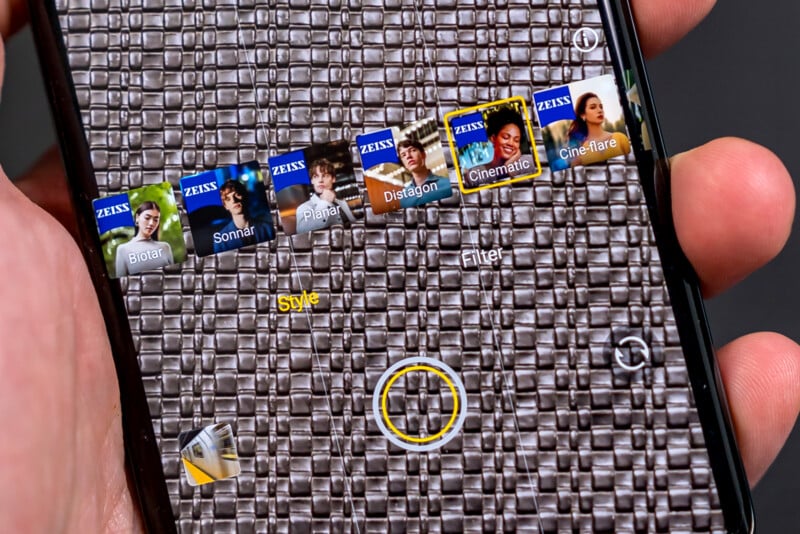
Night and Low-Light
The larger sensor and wide aperture always help with low-light photos, but Vivo is pushing it here more than before. Night mode is pretty deep in its feature set, and it’s brilliant to include shortcuts to the Long Exposure, Astro, and Supermoon modes within it. Tripod and night panorama settings only add to what’s available.

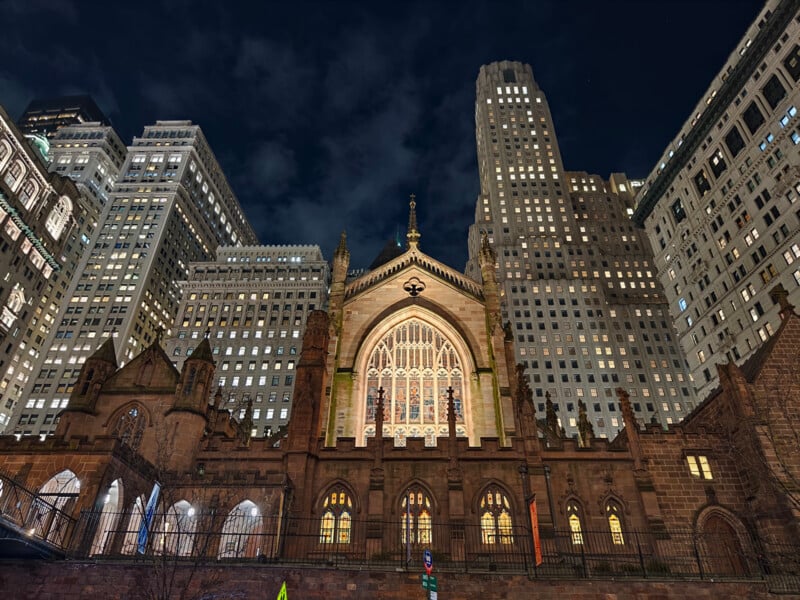
It’s not always necessary to use Night mode because the others do a pretty good job when there’s enough ambient light to work with, so you’re just glad to have the option in darker settings. I gripe about this all the time, but would really like the chance to control the length of the exposure myself rather than have the phone stick to the same preset countdown each time.
Pro and High Resolution
It’s always worth shooting in RAW on a good camera phone, and this is no exception. You still get RAW and SuperRAW for 14-bit bracketed images that now shoot faster than the X80 Pro. It’s still an elective feature you need to turn on and decide how many frames and the EV intervals you want to go with. However, you do lose out on focus peaking, which isn’t here for some reason.
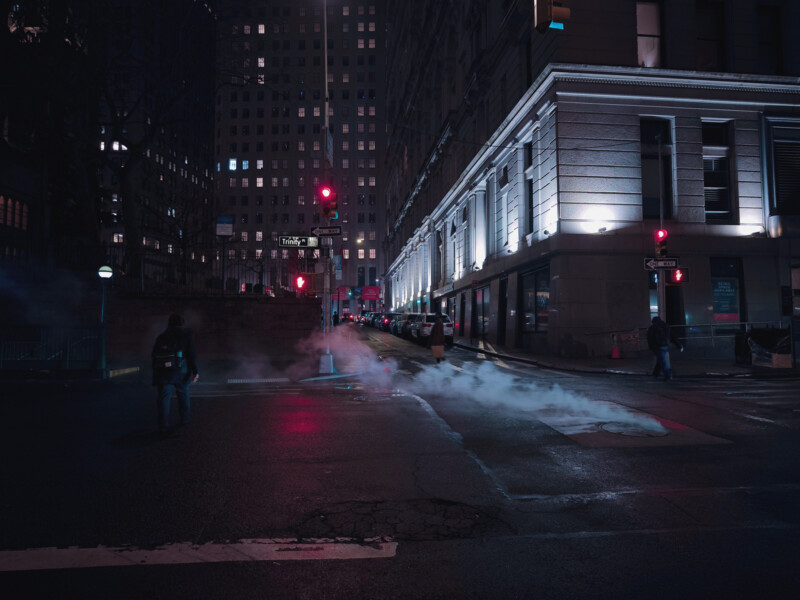
My one issue is that I couldn’t shoot in RAW at full resolution, despite having more internal storage to handle the larger file sizes. Granted, the larger pixels are ideal for low light, but having them all opens up other creative possibilities. Instead, I had to go with High-Resolution mode to shoot at 50 megapixels, which is fine, and yields good results in good conditions, but I still lamented the fact they came out as JPEGs. The Xiaomi 13 Pro holds an edge here because it embeds its 50-megapixel mode within the Pro mode, letting you shoot at full resolution with all the manual controls available (though not in RAW).

Special modes
I’ve long enjoyed playing around with Long Exposure on Vivo’s phones, and that doesn’t change here. The larger sensor and V2 chip actually help make images look better and process faster, so that’s certainly a plus. The one downside is it’s hard to control how bright the exposure gets when there’s no slider. Supermoon is also back again, where controversy came to the fore for the Samsung Galaxy S23 Ultra. Vivo has yet to respond to requests for further comment on what it does on the software side to make this mode work. Either way, if you want to shoot the moon, it’s the easiest way to do it.
I didn’t feel as confident about Vivo’s attempts at sports photography before, but finally, it looks like the X90 Pro turns a corner thanks to the V2 chip. There is less of a delay in taking an action shot than there was before. Not that there isn’t slight lag — you can miss a key moment if you’re not quick, so shooting in burst can often help get that perfect shot, though expect blur to inevitably set in somewhere, albeit less pronounced than before. If there’s one area Vivo really improved with the X90 Pro, it’s in shooting moving subjects.
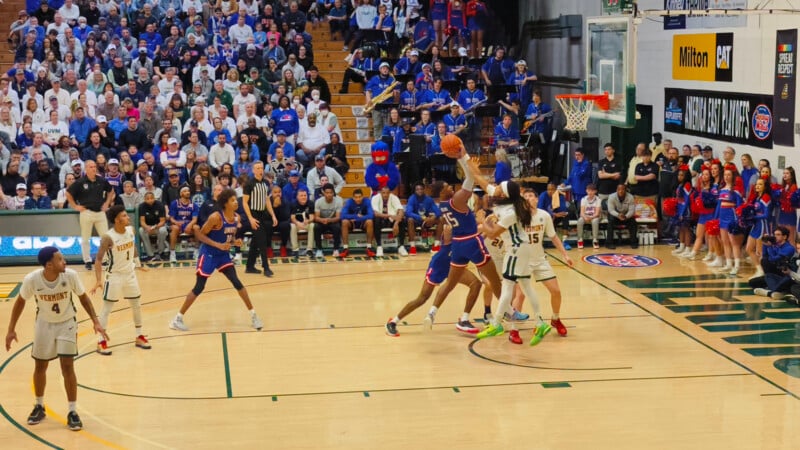
Other modes, like Zeiss Landscape & Architecture, Double Exposure, and Food, are worth trying out, even if results vary. The ultra-wide camera will kick in for Super Macro mode, which I thought was fine, but not as good as it probably would be with the X90 Pro+.

Vivo X90 Pro: Video Features
I focused on still photos for the X90 Pro, but its video performance comes with good tools as well. You can shoot in 4K with all three cameras in either 30fps or 60fps. Thankfully, a Zeiss Cinematic preset within Video up to 8K adds something cool to it all, including 24fps up to 1080p. There’s also a Teleprompter setting to add text to read whether you are using the rear or front camera.
Footage looks good in a variety of conditions, with decent settings and options to work with, like Movie LUTs that also work together with Zeiss’ Cinematic style, adding some interesting ways to shoot as well. Another cool piece is Night mode will pop up within Video to capture footage using the same processing the X90 Pro applies to still photos. Results were better than I expected, though they will probably look better when shooting that way with the phone mounted on a tripod or gimbal.
The Vivo X90 Pro Makes a Strong Case for Itself
For a phone that’s technically not Vivo’s best in the X90 lineup, the X90 Pro is a solid shooter with a lot to offer. A camera system like this is ripe for perusal and experimentation, purely because there’s a good chance you will find more than one way to take the same photo. Vivo delivers on speed and efficiency, where it’s obvious this phone focuses and snaps photos faster than its predecessors did, lending credence to its claims the V2 chip makes a tangible difference.
The company wisely chose to wait a little longer to release it outside China, as opposed to the very short product cycle between the X70 and X80 lines in 2021-22, and I’m convinced that’s why this phone feels more substantial. It’s no slouch as a performer, including the strengthening Zeiss collaboration, which is great news for anyone willing to wield the X90 Pro.
![]()
Are There Alternatives?
The Xiaomi 13 Pro immediately comes to mind, not just because I tested both at the same time, but also because the feature set and output makes it a great competitor. You could also try the Vivo X90 Pro+ if you want a beefier camera array, including an additional telephoto lens for extra range.
Don’t rule out the Samsung Galaxy S23 Ultra, which took a step forward by improving key areas, not least of which the rare ability to shoot at 50 megapixels in RAW. The Google Pixel 7 Pro has to be in the conversation, simply because it shoots so well without all the frills these other phones have. Even the OnePlus 11 shouldn’t be overlooked this time around. And we can’t forget the best iOS has to offer in the iPhone 14 Pro and Pro Max.
Should You Buy It?
Yes, simply because it gives as much, if not more, than other phones do. It makes sense to upgrade to this from the X70 Pro or earlier, considering the price hovers around $1,000 depending on which variant you get.